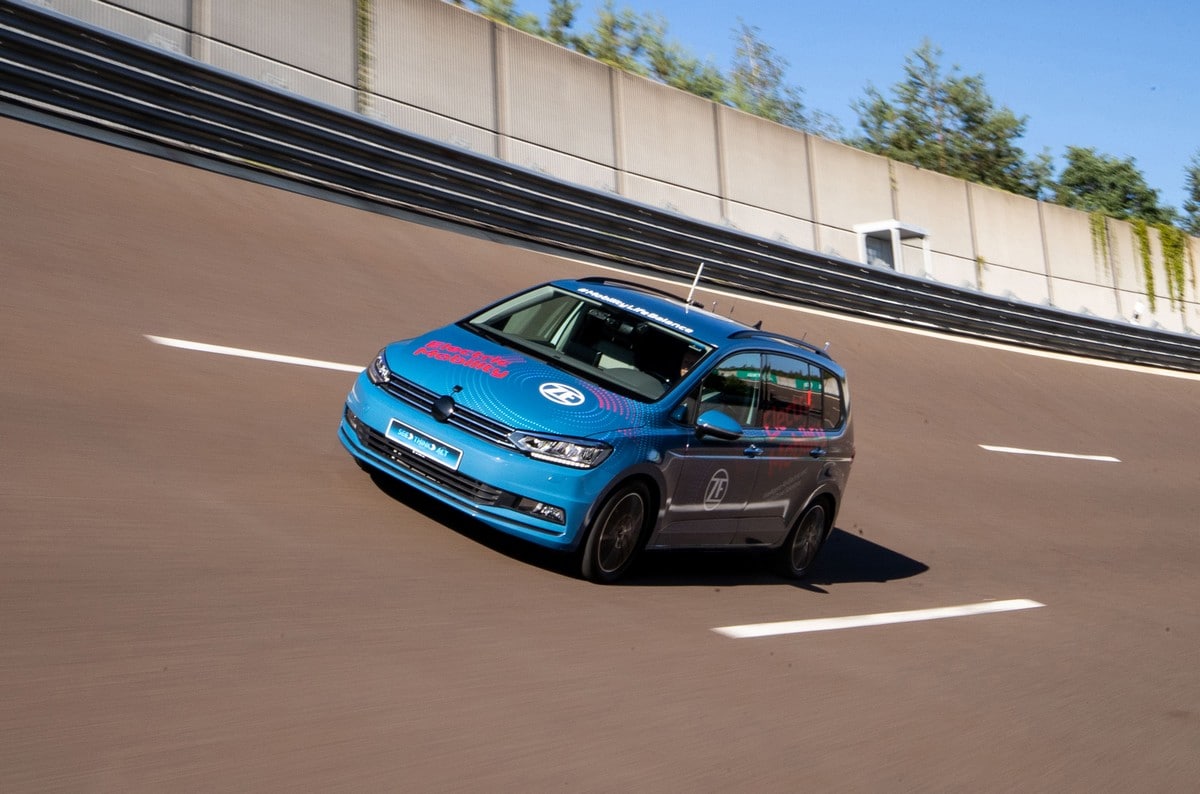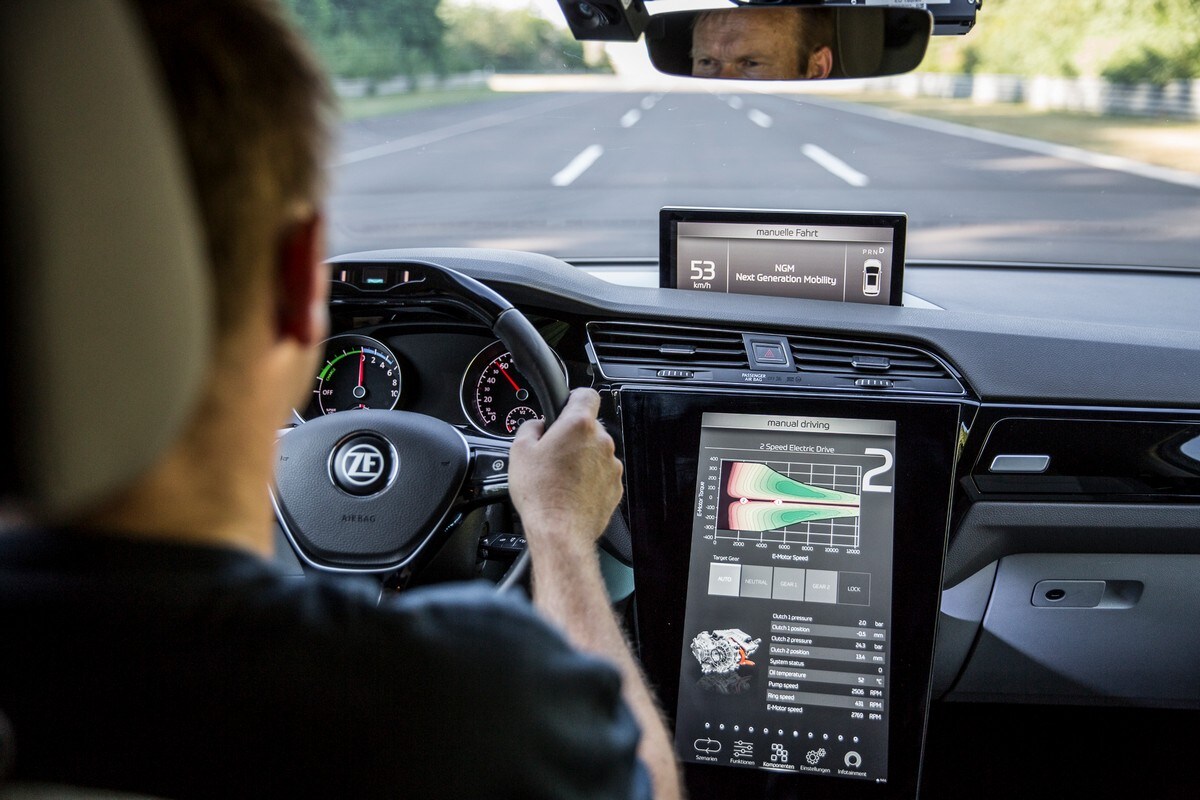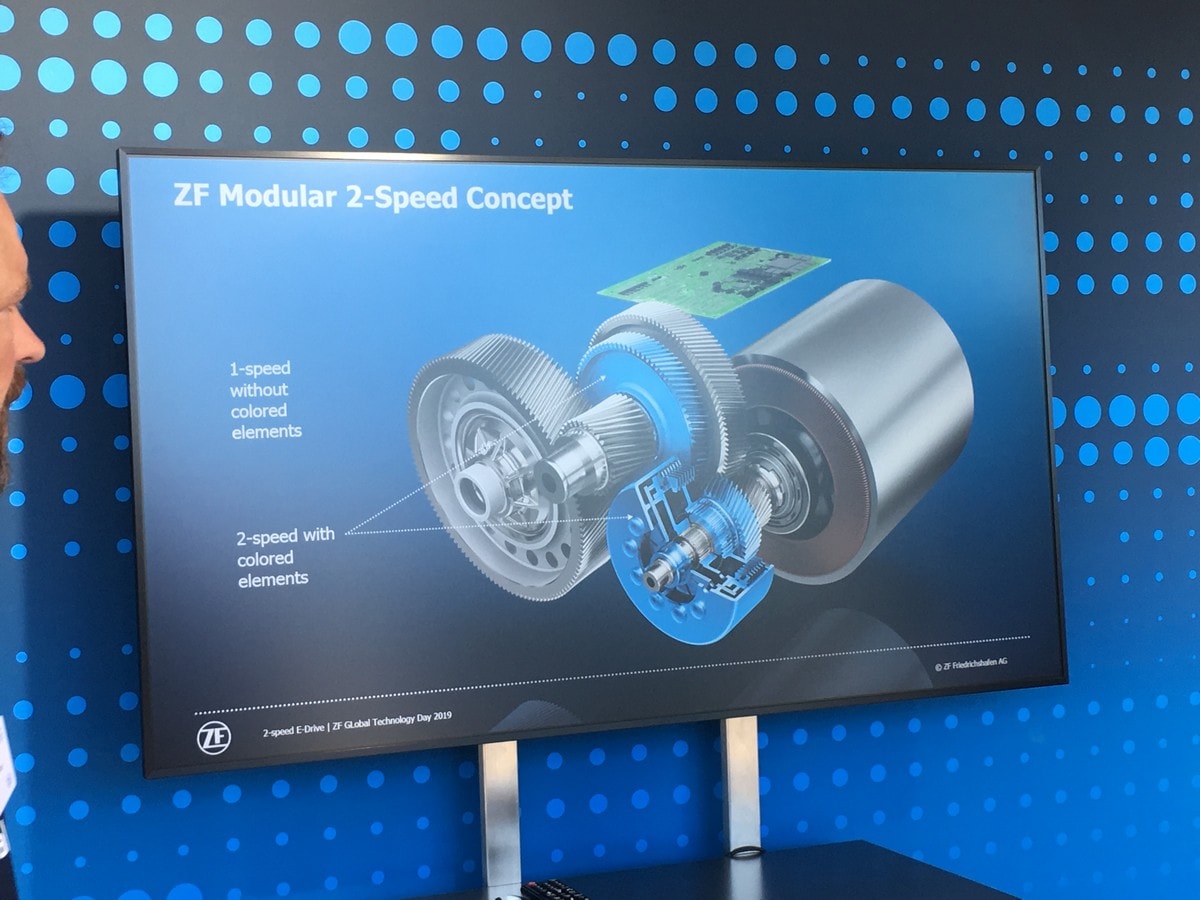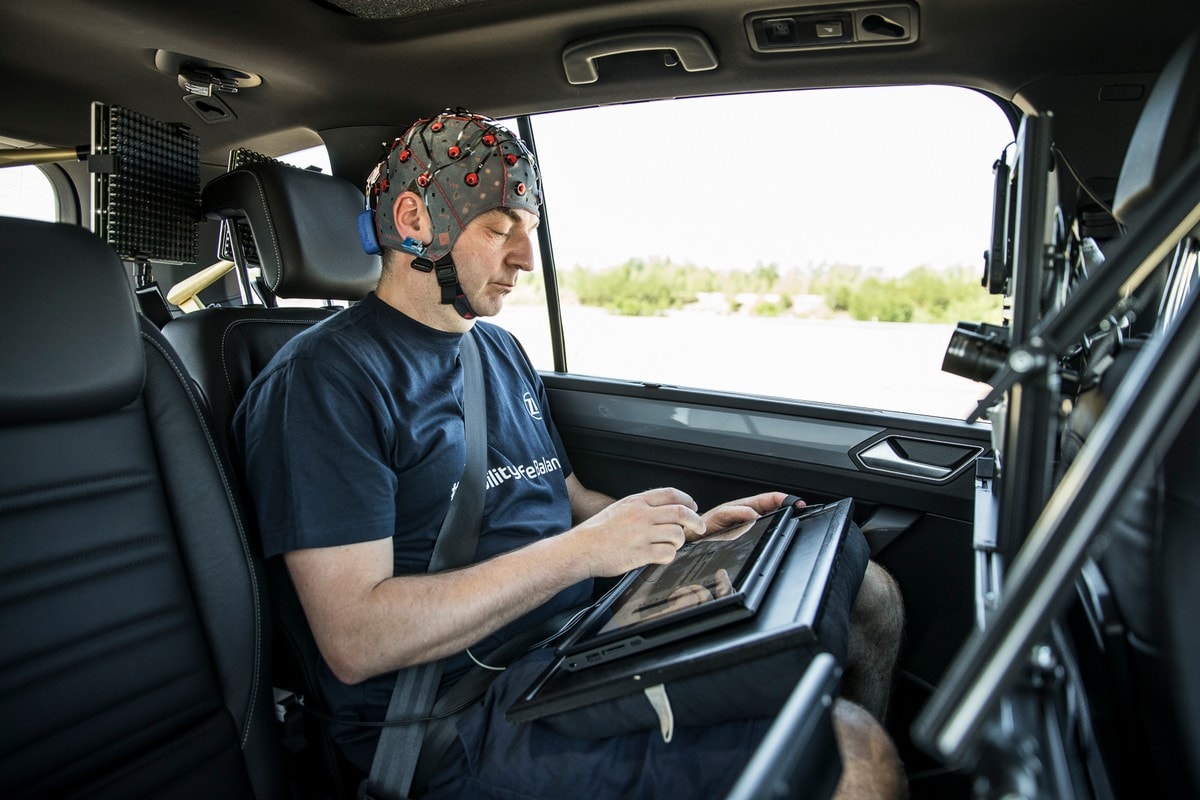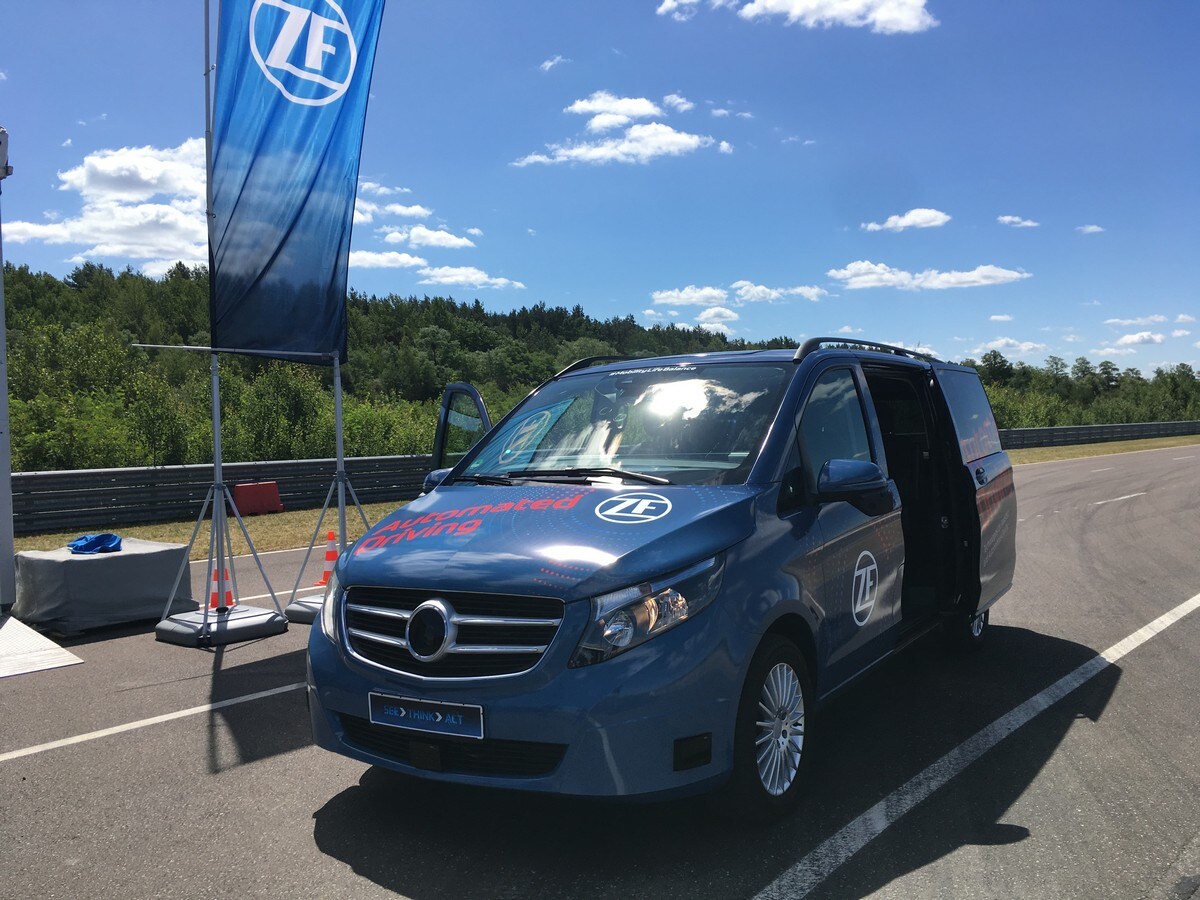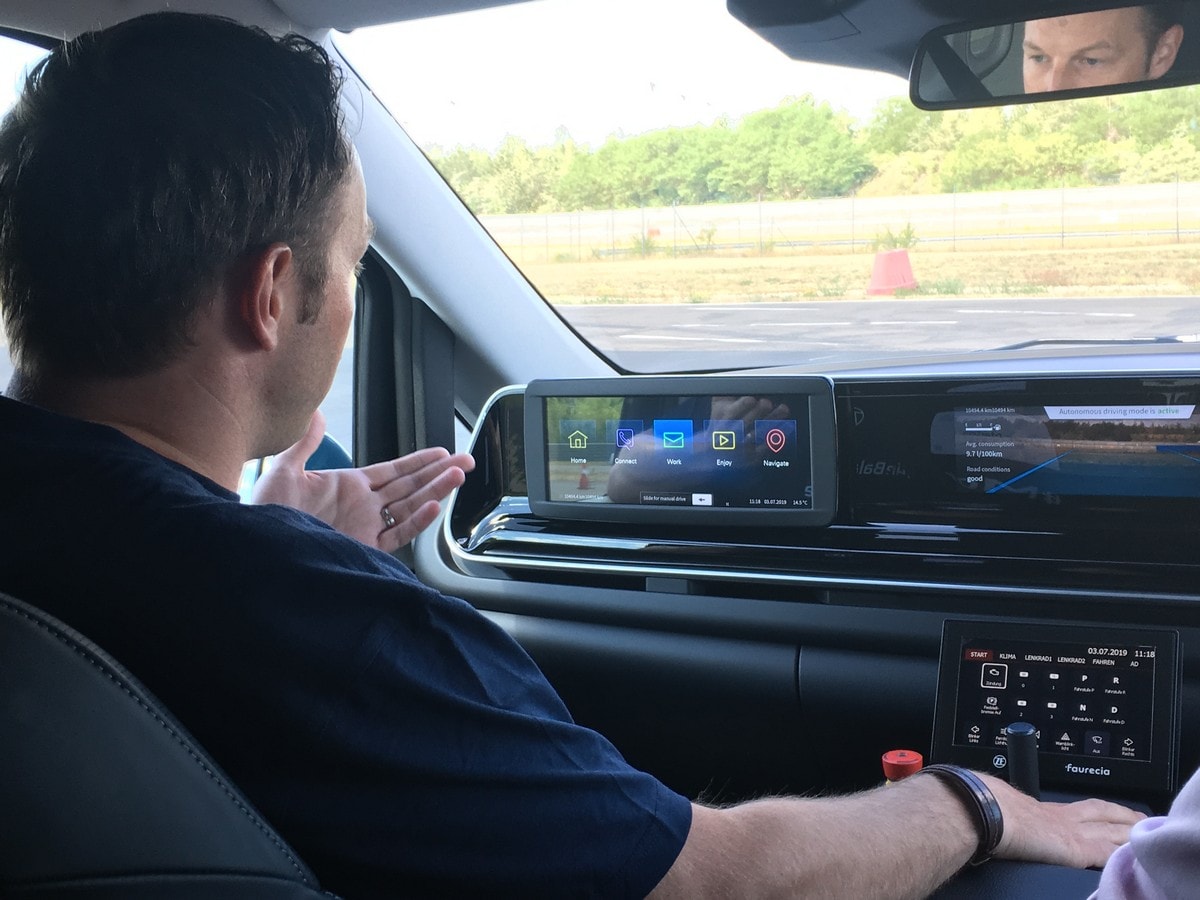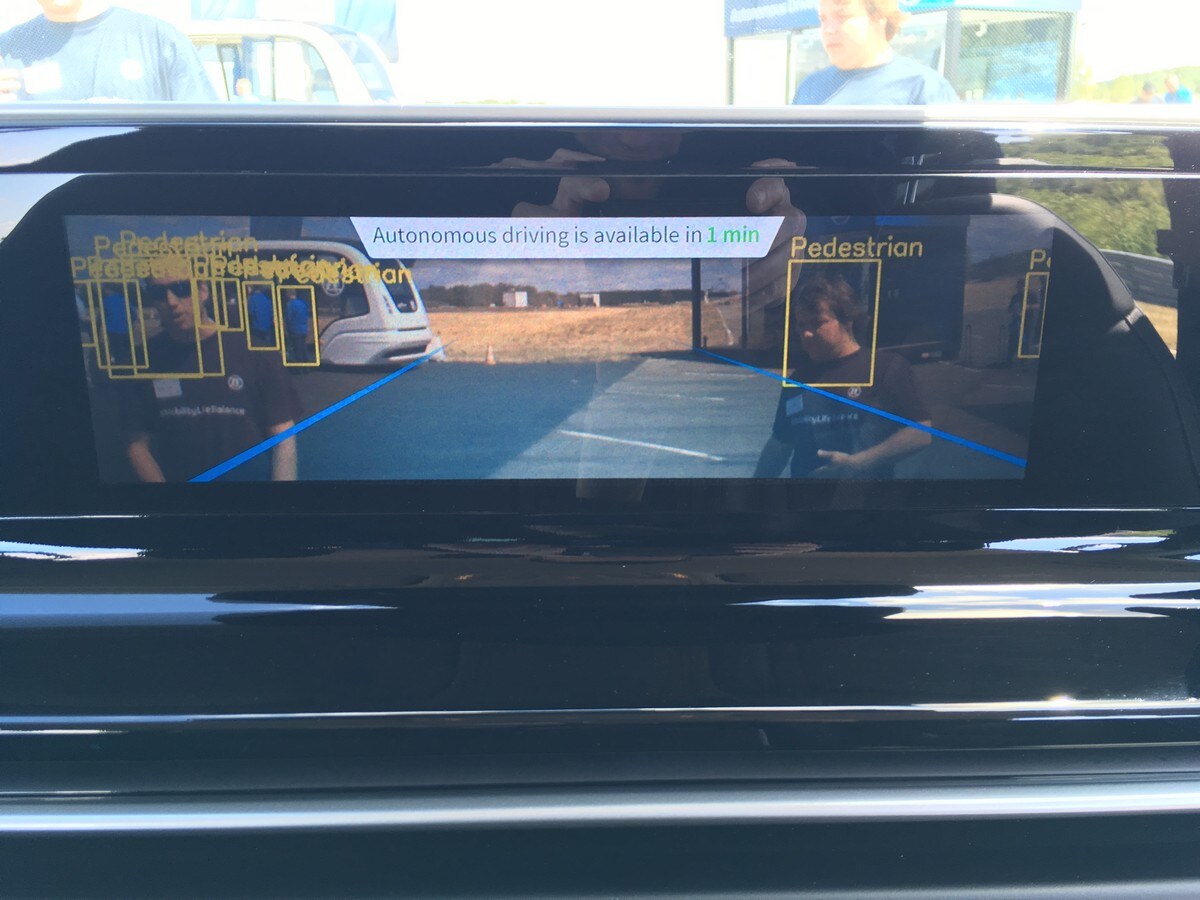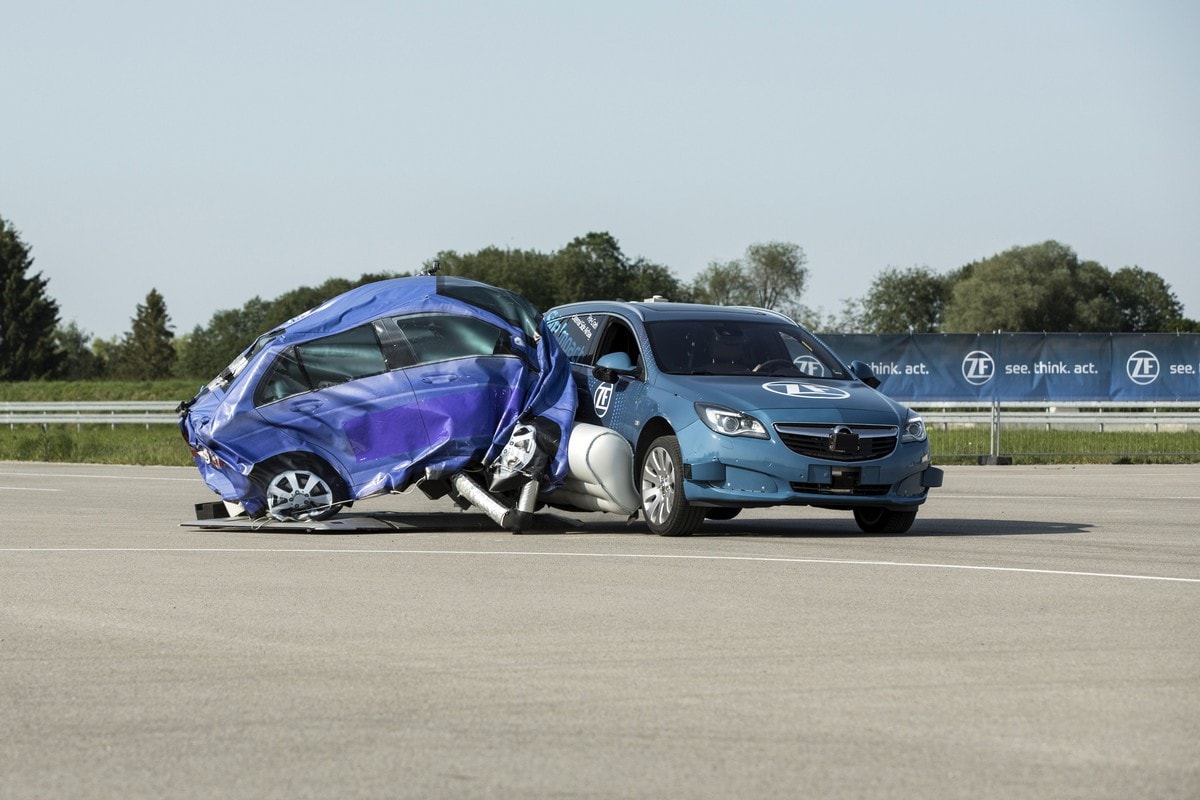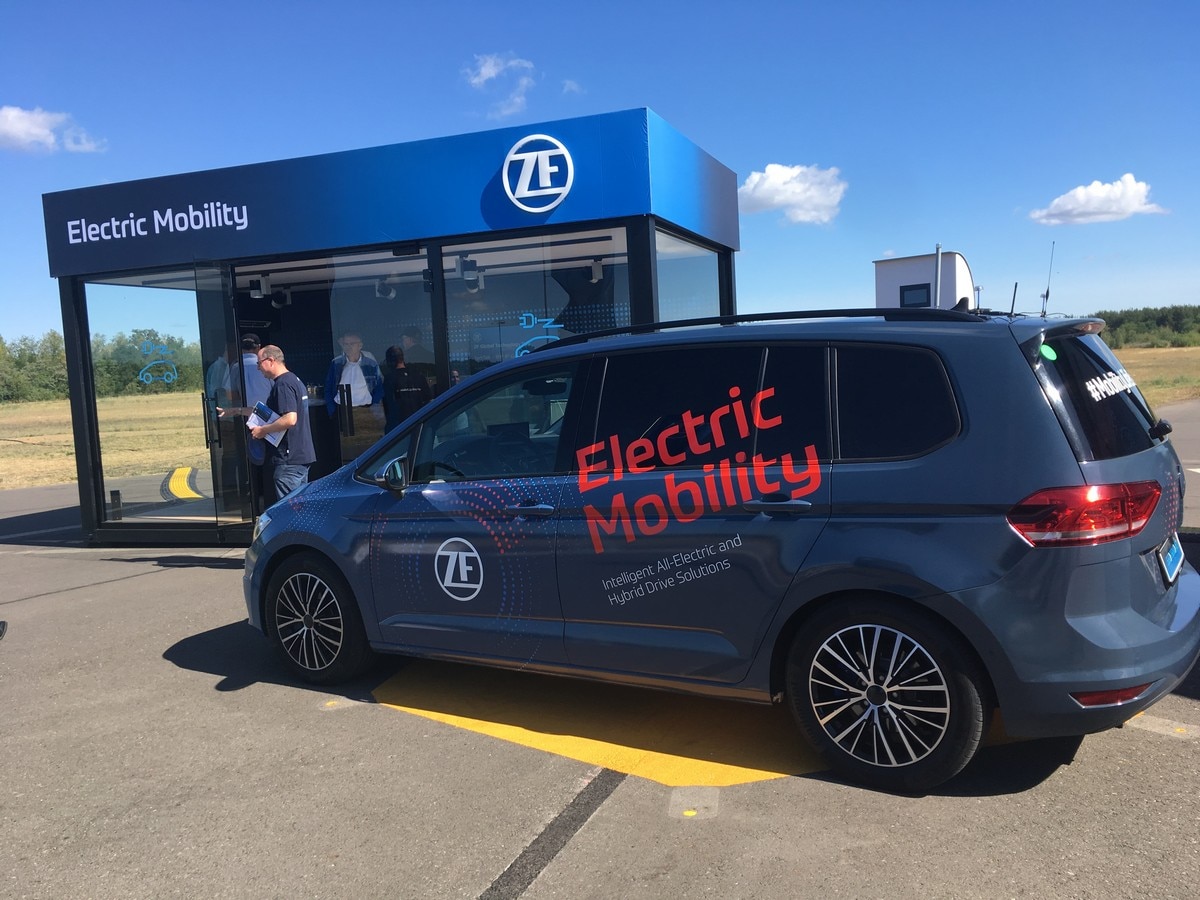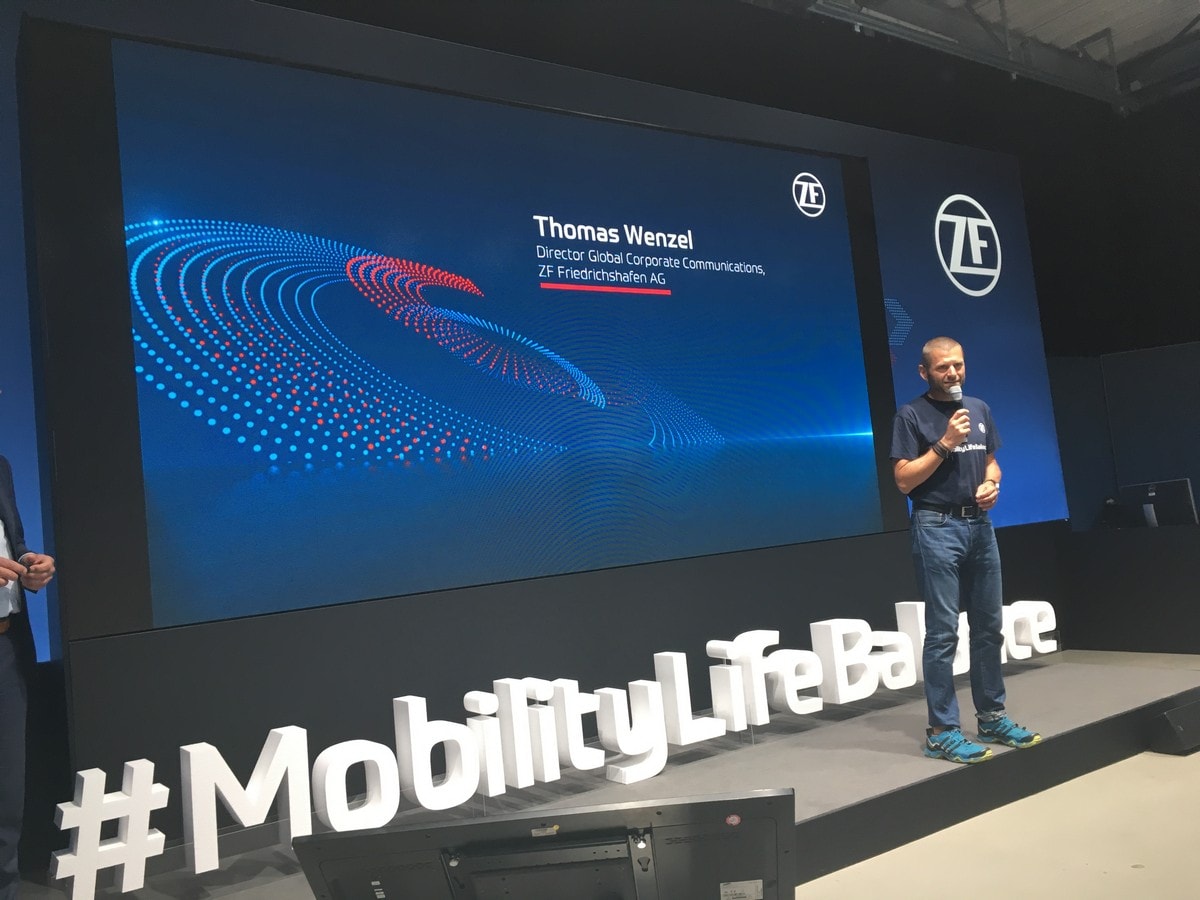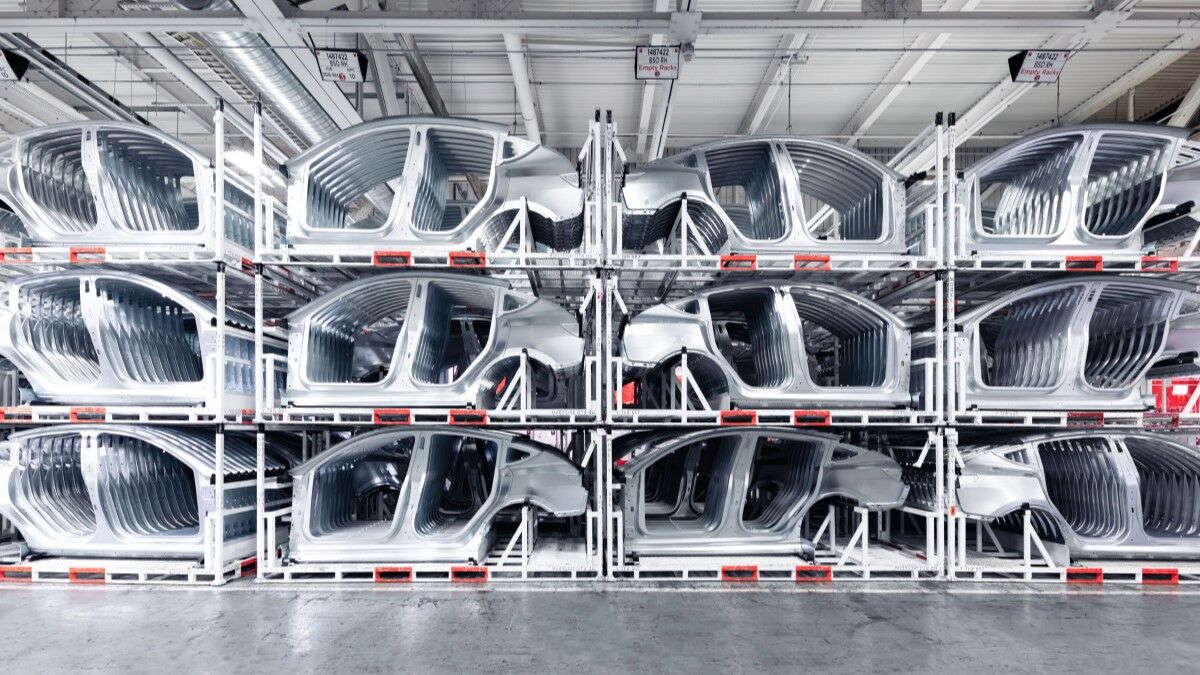- German supplier ZF grants glimpse of future
- Efforts focused on safety, security and autonomous vehicles
- 2-speed electric motor among world premier innovations
- Company preps next-gen automatic transmission for electrification
German automotive giant ZF is widely known for the transmissions it supplies to brands ranging from Jeep to Jaguar. But its technology and ambitions run far deeper than simply changing gears.
Like the automakers it supplies and the industry in general, ZF realizes that the future of the automobile is becoming more and more automated and electrified, all with the ultimate goal of making the cars we drive — or that are driving us — safe and simple to use.
With these long-term aspirations in mind, ZF invited us to its home country for a sneak peek at the technologies it is developing during its Global Technology Day. Here are five that stood out the most, and why they are relevant to everyday drivers.
1: Two-speed electric motor
The electric motors used in current battery powered vehicles like the Chevrolet Bolt and Tesla Model S are one speed. For the most part, they work well, offering immediate power off the line and plenty in reserve when needed at higher speeds. Still, ZF sees room for improvement. And their method is a 2-speed motor.
ZF showed a functional prototype of its 2-speed electric motor that was installed in a European version of a small Volkswagen van. Unlike a standard transmission, the 2-speed motor doesn’t have a set shift point, but can vary, optimizing power and efficiency for lower speed city driving or high-speed freeway cruising.
With two speeds, the motor is expected to provide improvements of about 10 percent higher performance and 5 percent more efficiency. While those percentages might sound minor, they matter, especially when it comes to range. Using the Chevrolet Bolt electric vehicle as an example, a 5 percent improvement would increase range from its current 238 miles to about 250 miles.
ZF also points out the motor could be optimized for a variety of vehicles, from juicing more power from electric sports cars to enhancing the towing ability of trucks. In addition to its potential use in pure EVs, the 2-speed electric motor could also be used in a plug-in hybrid electric vehicle (PHEV) where it could power the front or rear wheels. When asked why stop at just two speeds and not opt for three, four or five, ZF’s Dr. Stephan Demmerer said that after two speeds the returns diminish significantly.
2: Curing motion sickness before it begins
The long-range goal of companies ranging from Google’s Waymo to just about every mainstream automaker is to create a car that drives itself, without even having a steering wheel installed. You’ve probably seen renderings of such high-tech pods blissfully shuttling passengers as they recline, sleep or converse, often facing backwards.
In reality, this setup could be a one-way trip to Upchuck City. Yes, car sickness is real, and the potential for it increases greatly when you’re a passenger of a self-driving car. ZF is already working on ways to prevent this.
To prevent and/or identify motion sickness, the company’s researchers are currently using a bevy of sensory devices to detect signs of motion sickness such as cold sweating, pallor and nausea. After ZF’s in-vehicle monitors detect a passenger isn’t feeling well, it evaluates to what degree. From there, it enters a third stage after the initial detection and evaluation: act. In this stage, the ZF’s technology would help optimize the self-driving for greater comfort, while also initiating anti-sickness countermeasures in the form of audio, visual and haptic signals to the passenger.
Like self-driving cars themselves, this technology is still in the research stage, but it’s comforting to know that the company is already thinking of ways to make the paradigm-shift of self-driving cars that much smoother for those of us riding in them.
3. Autonomous vehicles
In addition to creating hardware and software to make passengers comfortable in autonomous cars, ZF is also working on the technology that will make the vehicles themselves a reality. To that end, the German supplier is working on next-gen solid-state LiDar systems, cameras and other vital hardware and software that will need to be perfected for cars to drive themselves.
We got a quick demo in a retrofitted Mercedes-Benz van – the same one that shuttled passengers at this year’s CES as a future ride-hailing service. This was my first time in this one, and it showed both impressive promise but also the expected need for further fine tuning. On a closed course it managed to stay in lanes while literally driving itself, but some of its motions were a bit jerky, akin to those of a new driver. This was most evident in turns and stops. That said, it was a wonder to be driven in a vehicle with no steering wheel, all while watching it scan the road in real time as the vehicle used ZF’s technologies to identify pedestrians and objects on its monitor.
4: Pre-crash External Side Airbag System
One of ZF’s most dramatic and impressive innovations is an exterior side airbag. Think of it as a force field for your car. In the event the vehicle is about to be hit from the side by another car — t-boned – the vehicle deploys a giant external airbag from underneath its side sill, essentially absorbing some of the impact and reducing penetration by around 30 percent. ZF says that this, in turn, can reduce the consequences of an accident on passengers by some 40 percent.
Like an airbag within the car, this external one acts instantaneously. But it must be far smarter than the kind of airbags we already know. Unlike a traditional internal airbag that reacts in the split seconds after impact, ZF’s Pre-crash External Side Airbag deploys before impact. That means its system must determine the likelihood that the car will indeed be hit by another vehicle, then deploy. The system does both in approximately 150 milliseconds. It is also smart enough to determine if the impact will indeed be from another vehicle and not, for example, a ball bounced by nefarious neighborhood kids.
Seen in action using an inflatable car as the aggressor, the test vehicle equipped with the ZF external airbag performed as designed and in the blink of an eye. It very well could be a reality in a few years, but that depends on an automaker deciding to use the technology, and then designing a vehicle to house the airbag itself.
5: 8-speed automatic transmission
For all its other innovations, ZF is hardly abandoning the business for which it is perhaps best known: transmissions. It still makes millions per year and remains focused on improving their efficiencies and optimizing them for electrified vehicles. To that end, ZF previewed its just-announced 4th generation 8-speed automatic transmission, called the 8HP.
ZF’s new 8-speed automatic is set to debut in 2022, and the supplier has already inked deals for it to be used in BMW and Fiat Chrysler products.
For this all-new generation, this transmission is designed with three applications in mind: conventional gasoline-powered engines, mild hybrids, and plug-in electric vehicles. One factor you might notice in that list is that all types will still incorporate an internal combustion engine. For all the talk of electrics, ZF predicts that even by 2030, at least 70 percent of passenger cars will still have a gasoline engine, including those used as part of an electrified powertrain.
With that in mind, the new 8HP will incorporate a traditional torque converter for purely gasoline-powered vehicles, or an electric motor in the hybrid-ready powertrains. As to why ZF decided to continue to go with 8 speeds when others are already incorporating up to 10, executives said that 8 remains ideally efficient in ZF’s eyes. In our own tests, the 8-speed is already a superb transmission, and the next gen should continue to provide seamless and efficient automotive operation.
